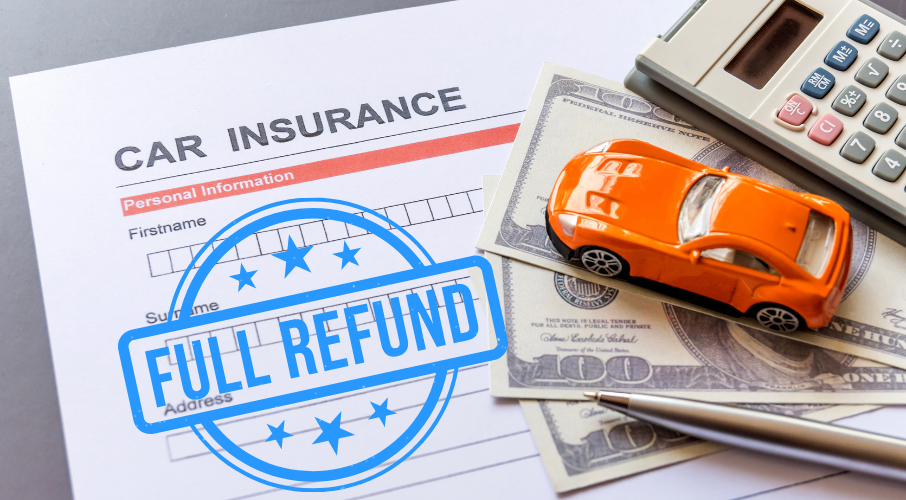How to Cancel Your Car Insurance Policy and Get a Refund: A Step-by-Step Guide
Car insurance is essential for protecting your vehicle and yourself from financial losses due to accidents, theft, or other damages. However, there may come a time when you need to cancel your car insurance policy—whether because you’re switching providers, no longer own the vehicle, or have found a better deal. In this guide, we’ll walk you through the process of cancelling your car insurance policy and how to get a refund if applicable.
Reasons to Cancel a Car Insurance Policy
There are several reasons why you might consider cancelling your car insurance policy, such as:
1. Finding a Better Deal
You may discover a new provider offering lower premiums, better coverage, or more flexible terms that suit your needs.
2. Selling Your Car
Once you sell your car, maintaining the insurance policy may no longer be necessary.
3. Dissatisfaction with Current Insurer
If you’re unhappy with the service provided by your current insurer—whether due to poor customer service, high premiums, or limited coverage—you may opt to switch providers.
4. No Longer Needing the Coverage
If you’re no longer driving or have transferred the vehicle to another owner, the insurance policy becomes redundant.
Steps to Cancel Your Car Insurance Policy
Follow these simple steps to cancel your car insurance policy and receive any applicable refund.
1. Review Your Policy
The first step in cancelling your car insurance is to thoroughly review your current policy. Look for any specific cancellation terms, such as:
- Notice periods
- Cancellation fees
- Refund eligibility Understanding these details will help you navigate the cancellation process without unexpected surprises.
2. Contact Your Insurance Provider
Reach out to your insurance provider via phone or email to inform them of your intent to cancel. Be prepared to provide your policy number and personal details for identity verification. Some insurers may even offer to match competitive quotes to retain your business, so it’s worth discussing your options.
3. Submit a Written Request
Most insurers will require a formal written cancellation request, either via email or through their online portal. Your request should include:
- Your policy number
- The desired cancellation date
- The reason for cancellation
If your insurer has a specific cancellation form, be sure to fill that out to expedite the process.
4. Confirm the Cancellation Date
Make sure to confirm the effective date of the cancellation with your insurer. If you’re switching to another provider, it’s crucial to avoid any gaps in coverage to maintain continuous protection. Align the cancellation date with the start of your new policy if applicable.
5. Return Any Required Documents
Some insurers may ask you to return physical documents, such as your insurance card or policy certificate. Ensure that you follow their instructions to avoid delays in the cancellation process.
6. Settle Any Outstanding Fees
There could be fees associated with cancelling your policy early, such as cancellation charges or outstanding premiums. Ensure these are cleared before proceeding with the cancellation. If fees apply, they may be deducted from any refund due to you.
7. Request a Refund
If you are entitled to a refund, formally request it during the cancellation process. Refunds are usually calculated based on the unused portion of your premium, minus any cancellation fees. Insurers typically use a short-rate calculation, meaning you may receive slightly less than the prorated amount.
8. Get a Written Confirmation
Once all steps are complete, request a written confirmation from your insurer. This document should detail the effective cancellation date and any refund you’re owed. Keep this record for future reference.
How Refunds Are Calculated
The refund amount for cancelling a car insurance policy depends on several factors:
1. Time Remaining on Your Policy
The earlier you cancel within the policy term, the higher your refund will be, as there will be more unused coverage left.
2. Cancellation Fees
Some insurers charge a fee for early cancellations, which will be deducted from your refund.
3. Short-Rate Calculation
Refunds are typically calculated on a short-rate basis, meaning the insurer retains a portion of the premium for administrative costs. The refund is slightly less than a prorated amount, which accounts for the time your vehicle was covered.
Important Tips for Cancelling Your Car Insurance
Plan for Continuous Coverage
If you’re cancelling your policy because you’re switching to another insurer, make sure to overlap the dates to avoid a lapse in coverage. A gap in insurance coverage could result in penalties or fines, especially if you drive during the uninsured period.
Understand Cancellation Terms
Read through your current policy’s cancellation terms carefully to avoid any unnecessary fees or complications. Knowing the rules in advance will make the process smoother.
Keep Your Documentation
Whether it’s confirmation emails, cancellation forms, or refund receipts, make sure you save all relevant documentation. This can serve as proof of cancellation in case of disputes or errors.
Final Thoughts
Cancelling your car insurance policy doesn’t have to be complicated. By following the steps outlined in this guide, you can cancel your policy smoothly and ensure you receive any refund you’re entitled to. Whether you’re switching insurers, selling your car, or no longer needing coverage, it’s important to communicate clearly with your insurer and understand the terms of your policy.
Make sure to plan ahead, avoid gaps in coverage, and settle any outstanding fees. With proper preparation, you can transition to a new provider or close your policy with minimal hassle.











Post Comment